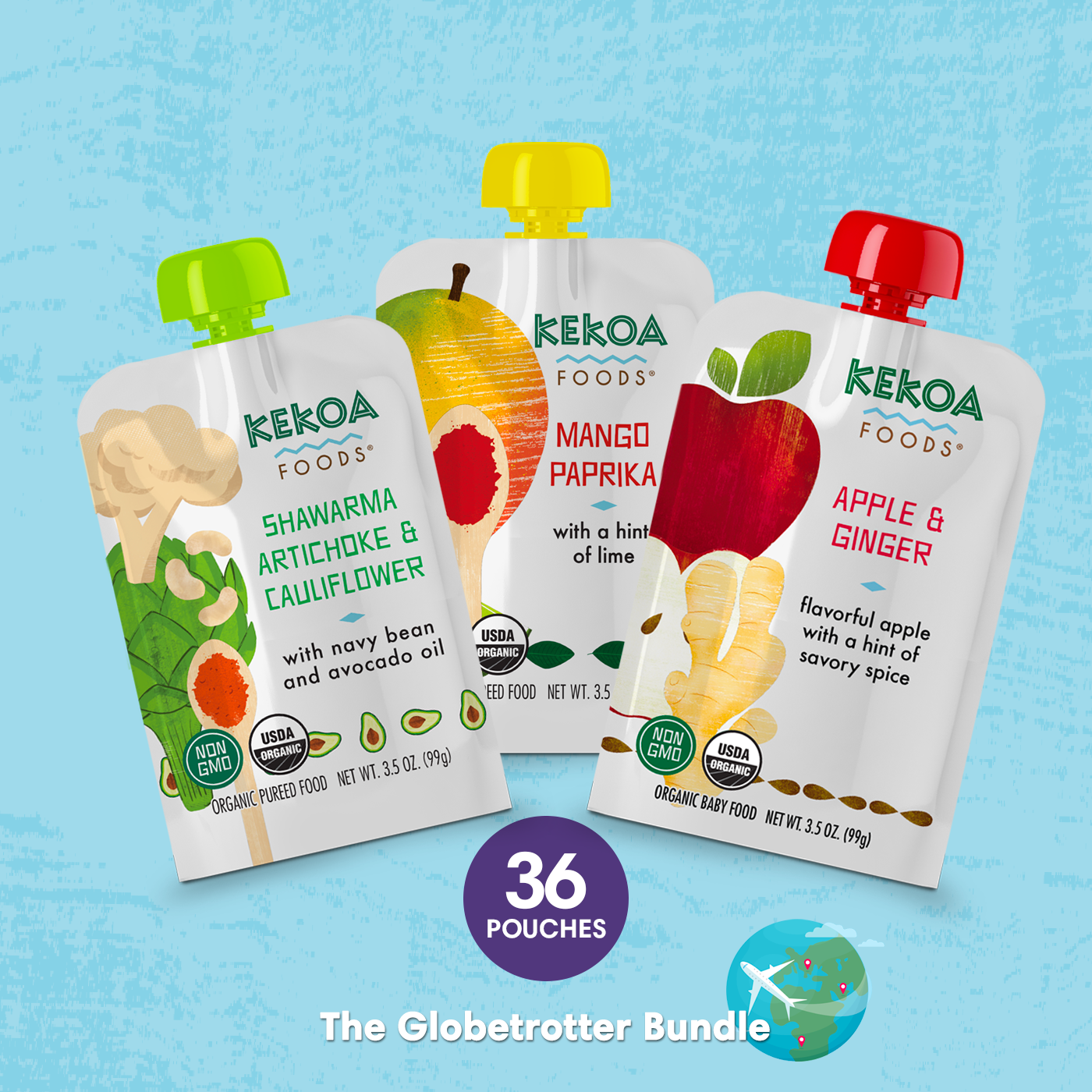¡Bienvenido al Programa de Entrenamiento del Gusto de Kekoa Foods™!
Recuerda, esto es entrenamiento...
Días de formación y flexibilidad
Kekoa Foods
Entrenamiento del gusto | Paquete Explorer: guisantes y menta, calabaza y col rizada con cúrcuma, remolacha, hinojo y col rizada
¡Bienvenidos al punto de partida del viaje de aprendizaje del gusto de su bebé! El paquete Taste Explorer está diseñado para presentarle a su pequeño una variedad de sabores suaves y ricos en vegetales. Estas bolsitas son una combinación perfecta de hierbas y especias suaves que son agradables para las papilas gustativas de los más pequeños y, al mismo tiempo, repletas de nutrientes.
El paquete Explorer incluye 36 bolsas en total: tres paquetes de 6 de guisantes y menta, dos paquetes de 6 de calabaza y col rizada con cúrcuma y un paquete de 6 de remolacha, hinojo y col rizada.






Kekoa Foods
Entrenamiento del gusto | Paquete Voyager: remolacha, hinojo y col rizada, shawarma de alcachofas y coliflor, curry de verduras y mango
El paquete Voyager se basa en el paquete Explorer y ofrece a los más pequeños una deliciosa combinación de verduras y especias que amplía suavemente sus límites gustativos. Desde la dulzura sutil de la remolacha hasta la calidez sabrosa de las especias para shawarma, estos sabores son perfectos para esas pequeñas papilas gustativas que anhelan más. Prepárese para verlos explorar nuevos sabores y convertirse en comensales más aventureros.
El paquete Voyager incluye 36 bolsas en total: dos paquetes de 6 de remolacha, hinojo y col rizada, un paquete de 6 de shawarma de alcachofa y coliflor, y tres paquetes de 6 de curry con verduras y mango.






Kekoa Foods
Entrenamiento del gusto | Paquete Globetrotter: shawarma de alcachofa y coliflor, mango, pimentón, manzana y jengibre
¡El paquete Globetrotter está diseñado para llevar el paladar de tu pequeño a nuevas alturas! Este paquete trae la dulzura familiar de la fruta madura, combinada con sabores emocionantes y exóticos. Las manzanas se combinan con el toque picante del jengibre y los mangos con la calidez del pimentón: esto completa el entrenamiento del gusto de tu hijo. ¡Tu pequeño está listo para probar cualquiera de nuestros deliciosos sabores en cualquier orden a partir de ahora!
El paquete Globetrotter incluye 36 bolsas en total: dos paquetes de 6 cada uno de shawarma, alcachofa y coliflor, mango, pimentón, manzana y jengibre.






Programa de entrenamiento
Guisantes y menta
Calabaza y col rizada con cúrcuma
Remolacha, hinojo y col rizada
Shawarma, alcachofa y coliflor
Curry De Verduras Y Mango
pimentón de mango
manzana y jengibre
Al seguir el programa de entrenamiento del gusto, no solo ampliará el paladar de su hijo, sino que también lo preparará para una vida de alimentación saludable y aventuras culinarias.
¡Embárquese juntos en este sabroso viaje!
Caton, SJ, Ahern, SM y Hetherington, MM (2013). Factores sensoriales en la alimentación: prueba de un nuevo modelo de exposición sensorial. Appetite, 71, 223-229. https://doi.org/10.1016/j.appet.2013.08.009
Mennella, JA, Nicklaus, S., Jagolino, AL, y Yourshaw, LM (2008). La variedad es la sal de la vida: estrategias para promover la aceptación de frutas y verduras durante la infancia. Physiology & Behavior, 94(1), 29-38.
Victora, CG, Adair, L., Fall, C., Hallal, PC, Martorell, R., Richter, L., y Sachdev, H. S (2008). Desnutrición materna e infantil: consecuencias para la salud de los adultos y el capital humano. The Lancet, 371(9609), 340-357.






